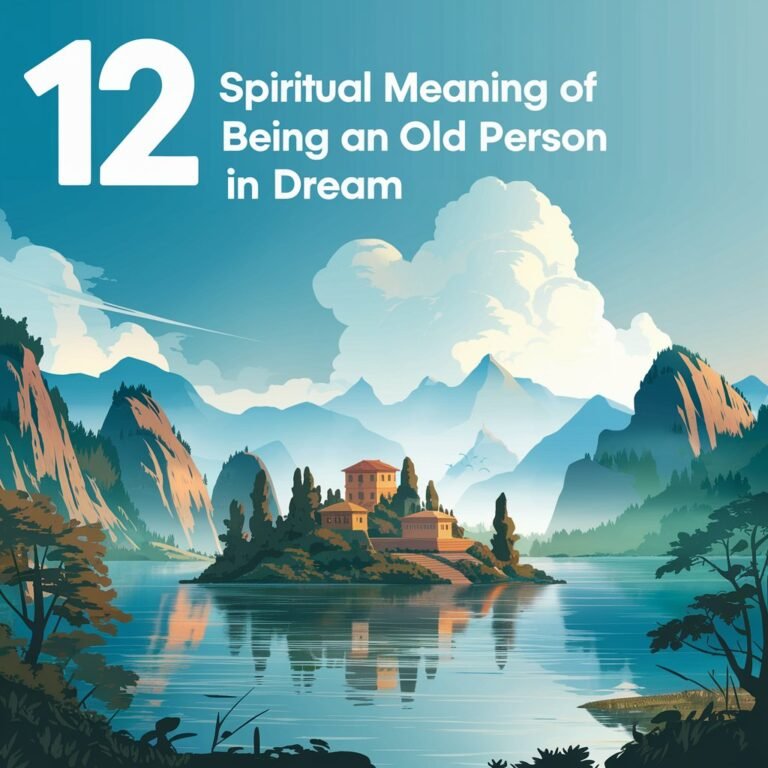12 Spiritual Meanings of Angry Ghost: Signs & Insights
Angry ghosts represent unresolved issues. They signal deeper emotional problems and can indicate unfinished business in life and death. Their presence urges us to examine our feelings and situations. Understanding angry spirits involves looking at cultural beliefs and personal experiences. By exploring their messages, you can gain insights into your unresolved matters. What lessons can these spirits teach you about your life?
Key Takeaways
- Angry ghosts often signify unresolved grievances, reflecting the emotional attachments and frustrations left unaddressed in their past.
- Their vengeful encounters stem from a strong desire for closure regarding unfinished business or conflicts.
- Energy imbalances can manifest as anger, indicating the need for emotional healing and grounding practices.
- Unprocessed fear within these spirits often surfaces as anger, suggesting a deeper emotional struggle that requires understanding.
- Cultural perspectives portray angry ghosts as symbols of ancestral legacies, reminding the living of unresolved issues within familial ties.
Unresolved Grievances
Angry ghosts often come from unresolved grievances. Their earthly attachments weigh heavily on them.
These spirits linger due to unexpressed emotions linked to past experiences. People with these emotional burdens often feel stuck between wanting closure and being unable to face their feelings.
This emotional deadlock creates frustration and anger, making it hard to move on.
Recognizing these lingering attachments can help you gain clarity in your life. They often mirror unresolved issues you may also face.
Unfinished Business
When spirits have unfinished business, their emotions can show as anger. This anger arises from unresolved matters that burden them, leaving a lasting impact on the living.
In your encounters with such spirits, you may feel their strong desire for closure. They often seek validation or wish to resolve conflicts that were never settled.
This understanding can change how you view ghostly encounters. Instead of seeing these spirits as purely vengeful, recognize their emotional struggles.
Acknowledging their need for closure can foster compassion and may lead to meaningful connections, enhancing your experience in the spiritual landscape.
Energy Imbalance
Energy imbalances can appear as anger in some spirits. Unresolved emotions and negative experiences often fuel this intense energy. Fixing these imbalances can lead to a more peaceful life.
Solutions like meditation, grounding techniques, and chakra alignment can help change disruptive patterns.
Practicing emotional energy healing allows you to let go of pent-up anger. This promotes peace for both you and the spirit involved. The healing process encourages connection and understanding between the living and the spirit world.
Fear Manifestation
Unresolved fear within spirits can show as anger, reflecting deeper emotional issues. This emotional struggle often comes from significant fear triggers, such as trauma and unhealed wounds.
When spirits can’t process these feelings, anger may emerge as a way to release those emotions. By recognizing these patterns in angry spirits, you can gain insight into their hidden fears, leading to a more compassionate view of their situation.
This understanding creates a connection between you and the spirit, as you both explore their emotional experiences. Focusing on fear rather than anger can promote healing for everyone involved, resulting in greater peace and emotional resolution.
Call for Attention
Unresolved anger in spirits often shows itself as a call for attention. You may notice strange noises or sudden chills in your environment.
These signs indicate their need for recognition. Often, this anger connects to forgotten memories and hidden feelings.
When spirits feel ignored, they might express their anger to bring you closer.
These manifestations aren’t just random disturbances; they’re ways for spirits to seek understanding and healing.
By noticing these signs, you can help address the cause of their unrest.
This action creates a chance for resolution. Acknowledging their presence builds a connection that goes beyond the physical world.
Reflection of Inner Conflict
Angry ghosts can reflect your inner conflicts. They symbolize unresolved emotional struggles and hidden turmoil.
When you sense their presence, view it as a signal from your mind. It encourages you to face parts of yourself that you may ignore.
Ask yourself why this anger appears. Is it due to unresolved grief or repressed frustration?
Recognizing these emotions helps validate your experiences and opens the door to healing. Accepting this reflection can lead to a better understanding of yourself.
This journey fosters personal growth and strengthens your connection with your community.
Warning Sign
Angry ghosts can signal potential dangers in your life. These ghostly warnings highlight issues you might ignore but need to confront.
You may feel uneasy or notice sudden changes when these energies appear. Pay attention to these shifts; they can reveal unresolved conflicts or toxic relationships requiring your attention.
Analyze your feelings and surroundings during these moments. By recognizing these signs, you can protect yourself from harm.
Embracing these insights helps you take steps to address underlying issues, which supports your emotional and spiritual well-being.
Need for Healing
When you see an angry ghost, it often shows a need for healing within yourself or your surroundings. This indicates unresolved emotions or past experiences that disrupt your inner peace.
An angry ghost can encourage you to reflect on your feelings and the energy around you.
To heal, consider activities that promote emotional release, such as writing in a journal, talking to a therapist, or practicing meditation.
Cultural Legacy
Different cultures view angry ghosts in various ways, shaped by their histories and myths. These spirits often represent fears, unresolved grief, and shared stories.
In some traditions, angry ghosts highlight issues unresolved by ancestors, reminding the living to respect their past. Ancestral connections are important in these beliefs, suggesting that deceased family members remain involved in the lives of their descendants.
Teaching and Guidance
Angry ghosts often have a significant role beyond causing fear. They can be powerful teachers and guides for those who are alive. Their strong energy helps you learn valuable lessons about emotional release and personal growth. Engaging with their energy can offer insights that support healing and spiritual growth.
Here are some ways these spirits can guide you:
- Reflection: They push you to face unresolved emotions.
- Awareness: Their anger shows you areas in your life that require change.
- Empowerment: You gain strength by processing your feelings.
- Connection: They emphasize the need to acknowledge your pain.
Connection to the Living
Angry ghosts connect to the living through strong emotional ties. These spirits often remain linked to people from their past or those who share similar feelings. You may notice their anger manifesting in strange events or intense emotions in the environment. This connection helps reveal unresolved issues from their lives.
Understanding these links allows for communication and healing.
By recognizing the presence of angry ghosts, you can gain insights into your emotions. This interaction can help you identify patterns or challenges in your life. Engaging with these spirits highlights the importance of empathy and connection between different forms of existence.
Transformation and Change
Angry ghosts can indicate a need for change in your life. Their presence often prompts personal growth and emotional healing. Understanding these encounters can help you gain insights into your feelings.
Here are some key points:
- Recognize unresolved emotions: Angry ghosts may mirror feelings you haven’t addressed.
- Accept discomfort: Change can feel difficult, but it’s essential for growth.
- Increase self-awareness: Think about what triggers your emotions to grasp their meaning.
- Find resolution: Participate in activities that promote healing and recovery.
Reflecting on these points can guide you through transformation. Embrace the lessons these encounters provide and move forward in your journey.
Frequently Asked Questions
How Can I Identify if a Ghost Is Angry?
To identify an angry ghost, pay attention to its behavior and energy. Look for signs such as sudden temperature drops, feelings of discomfort, or loud noises. These signs may show that the ghost is expressing anger or frustration.
What Are Common Signs of an Angry Ghost Presence?
You may notice signs of an angry ghost presence in your surroundings. Common signs include cold spots, flickering lights, and strange noises. These signs indicate that the spirit may feel uneasy or disturbed. It is important to examine the area closely to understand what might be causing these feelings.
Can Angry Ghosts Harm the Living?
Angry spirits can harm the living if their feelings are ignored. You can communicate with these spirits to understand their needs. This can help you avoid negative experiences and live peacefully with them. Recognizing their emotions is key to ensuring safety and coexistence.
How Do Different Cultures Interpret Angry Ghosts?
Different cultures view angry ghosts in distinct ways. Japanese folklore describes them as spirits of vengeance. Celtic mythology considers them restless souls unable to find peace. In African beliefs, anger relates to unresolved issues from life. Asian traditions and Native American stories see angry ghosts as signs of imbalance in the world. Each interpretation reflects cultural values and beliefs about life, death, and justice.
What Rituals Help Calm an Angry Ghost?
To calm an angry ghost, use spiritual cleansing rituals and communicate with the spirit. These actions help you understand the ghost’s feelings and promote peace. This connection can lead both you and the spirit to a harmonious state.

Naomi White is an esteemed expert in spirituality with a passion for uncovering the hidden meanings and messages within divine symbols. Naomi’s work aims to bridge the gap between the mystical and the everyday, helping others find guidance and inspiration in the symbols that surround us all.















